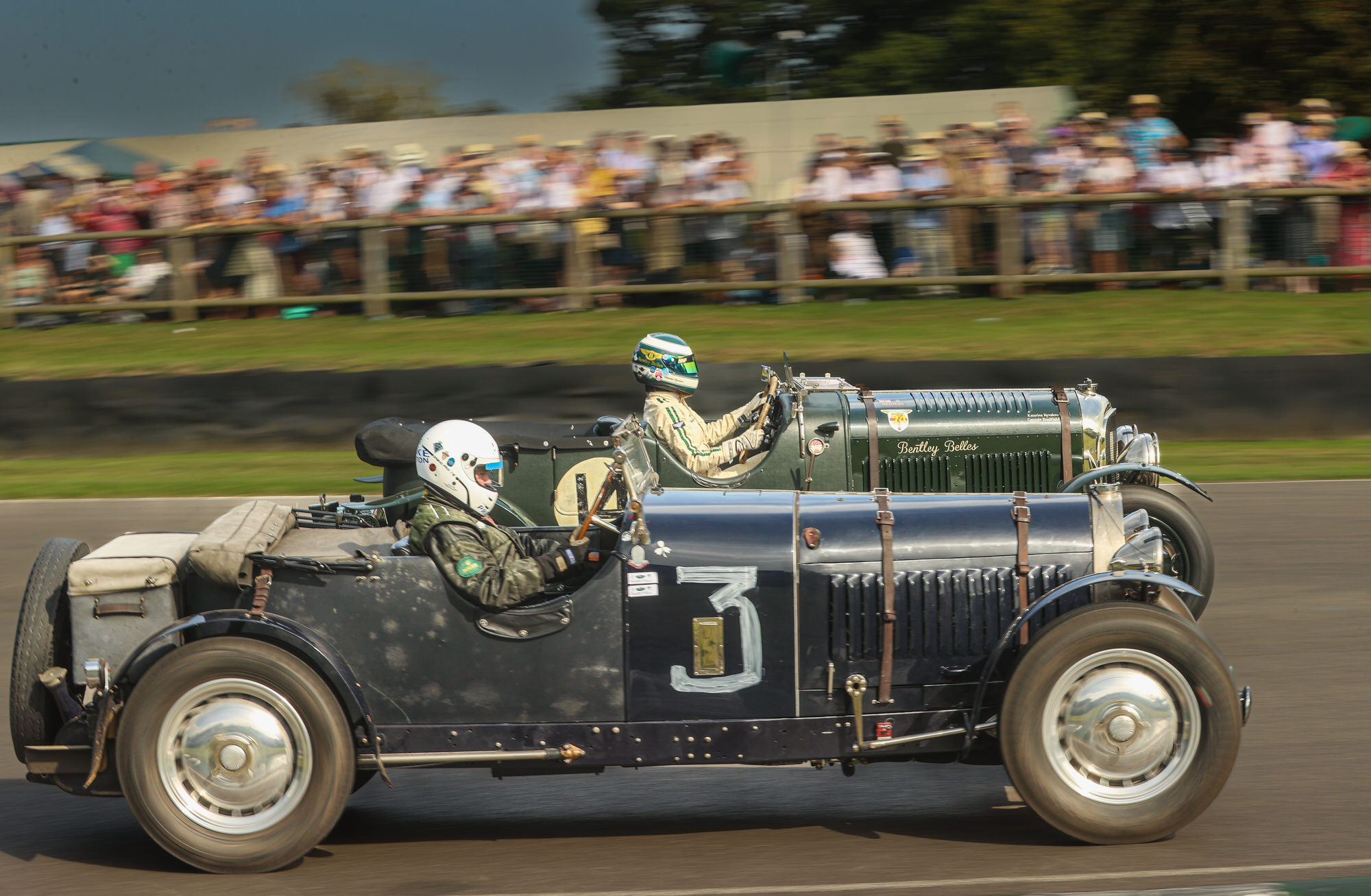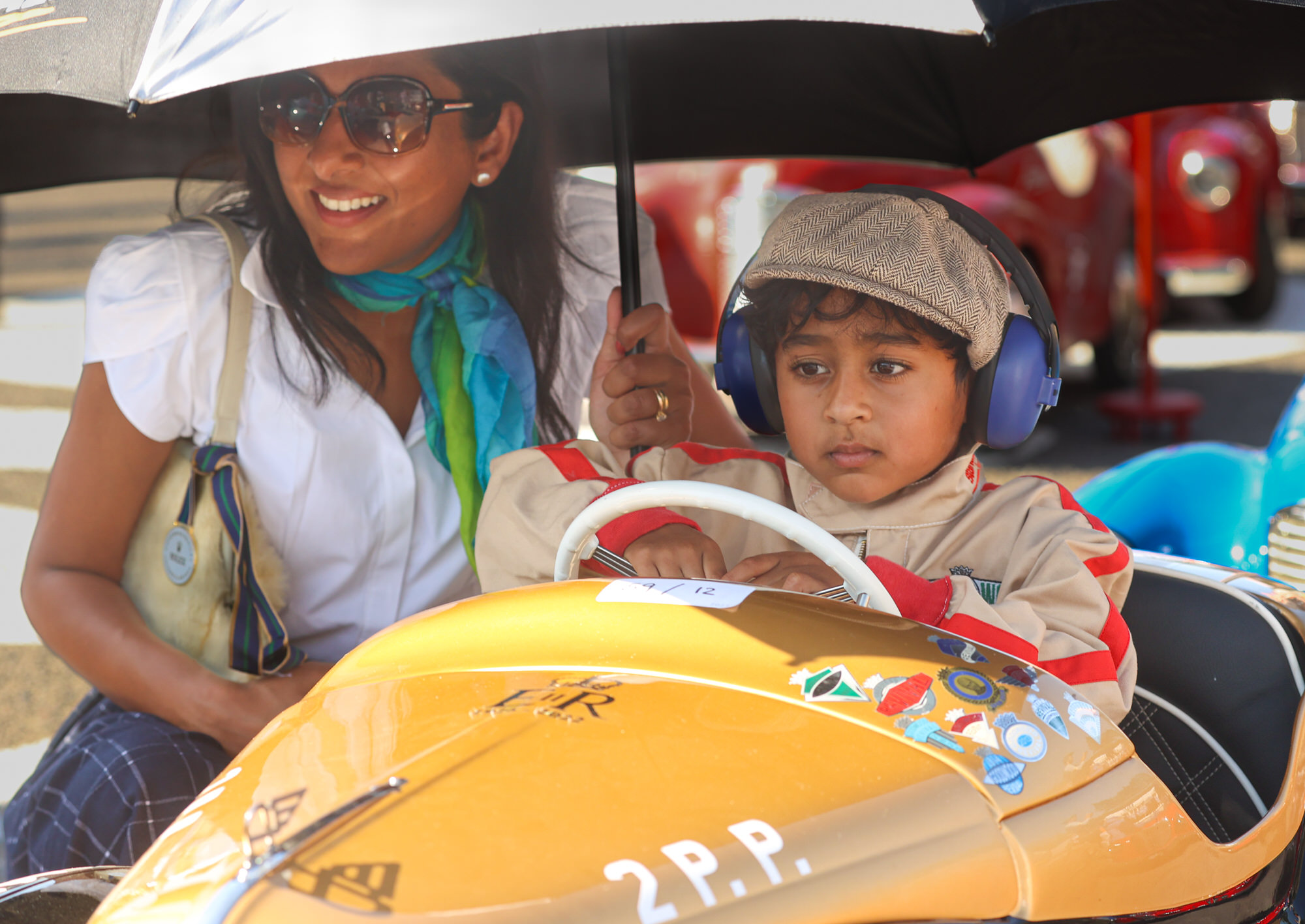The Goodwood revival means many things to many people and brings with it a plethora of visual, aural and other delights.

I always see the on track racing as the biggest attraction, inevitably spending most of my time trying to capture the sense of speed and competition on show there.
Of the sixteen races held over the weekend three were of particular interest.
First and foremost was the RAC TT Celebration, a “One Hour, two driver race for closed-cockpit GT cars and prototypes in the spirit of the RAC TT races held in 1963 and 1964”.
Every year the TT draws the greatest number of spectators and never fails to thrill with close racing between very fast cars that have swooping lines and beautiful sounding engines. It also usually represents a big fight for top honours between the AC Cobras and Jaguar E Types – two of the most evocative vehicles of all time.
This year was no exception with 10 Cobras and 7 E Types making up the majority of the grid. No other type of car has won since 2013 and, since the inception of the Revival, the score is 10 for the E Types and 9 for the Cobras.
It turned out to be a race of two halves. During the first period the track remained dry and the sheer grunt of the 4.7 litre V8 Cobras kept them ahead. And then the rain started


As the clouds emptied the wet track allowed the greater finesse of the straight six E Types to move to the fore. It also brought plenty of work for the body repairers and evidence of close contact was seen on many cars

In the end the Jaguars took the top two honours with the ACs ( or Shelby’s was they tend to be known in the USA) filling the next 3 slots.
First over the line was car number 78, also showing some signs of contact

Followed by the 88 car that was raced in period by Dick Protheroe who was the first to develop “low drag’ shapes for the E Type

And third was the famous GPG 4G that raced at Le Mans in the 60’s

The race also featured a few rare cars such as the Cheetah seen below. Ten were built in the 60’s with support from General Motors. It was intended to be a competitor to the Ford sponsored Cobra but failed to live up to expectations.


Further down the speed spectrum, and to celebrate the centenary of the Le Mans 24 hour race, was the Rudge Whitworth Cup for cars that represented those that raced there during the 1920’s. That period had seen strong rivalry, both on the track and in the showrooms, between W O Bentley and Ettore Bugatti, the later famously describing the former’s vehicles as “ the fastest lorries in the world. This theme was echoed in the top two grid places being taken by Bentley and Bugatti respectively. The races featured a Le Mans style start with the Bugatti making the quickest exit from the grid.


It then developed into a ding dong battle with a continual swapping of the lead:


With spirited driving both on the tarmac and the grass

The commentator saying that he had lost count of the number of times the lead changed. As a Brit, and an honorary member of the Bentley Drivers Club, I am glad to say that when the chequered flag fell the Bentley took the laurels with a winning margin of less than half a second.

The other Bugatti competing also rather challenges Ettore’s comment about lorries

A number of cars were also running on Synthetic Fuels as a foretaste ( hopefully) of the future of the classic car world

Moving to the bottom of the speed scale is the Settrington Cup a “Two part contest for Austin J40 pedal cars of a type that raced between 1949 and 1966”. The average speed of 7 mph may have been a tenth of that for petrol powered cars of the 20’s but the sheer charm and exuberance is always a big crowd puller. This race follows many attributes of all the others including driver interviews

Star named competitors ( in this case Karun Chandhok’s son Kushant )

A furious and close fought start


Close racing

Varying post race emotions

Though high fives for the support vehicle drivers may be unique

Fastest time of the 2 runs was made by Josh Johnston at an average speed of 7.55mph. He had clearly been taking advice on the aero effects that can be produced by a tongue

No doubt some of the competitors will be seen on the track in full sized cars at some stage in the future – here is Kevin Kivlochan’s daughter Maisie back in her peddling days and this year being driven by her mother, Sharron, in the Shelby parade


For the first time I also competed myself – though a race on the dodgems with my son in law only attracted a crowd of two.











